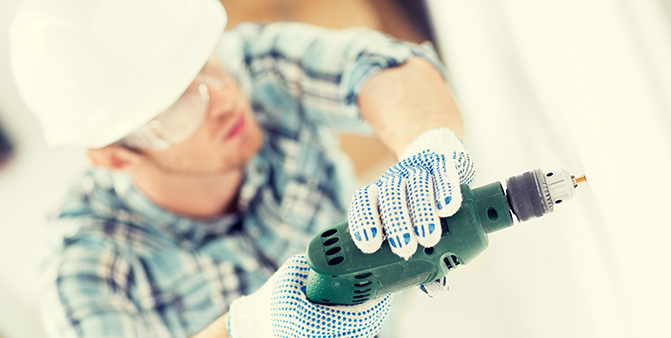6 Ways To Eco-Renovate Your Home’s Efficiency
Let's Save Energy
Alliance to Save Energy's Blog

Looking to invest in the efficiency of your home (and help the planet too)? You’re in luck. There are a slew of options available to homeowners today — so many options, in fact, that sometimes they can seem overwhelming.
To start, hire a professional to perform a home energy efficiency audit on your house. This will help you understand where the low-hanging fruit and cost savings exist. Some municipalities may offer this service for free. Even if they don’t, it's well worth the initial outlay of money.
After an audit, here are a few options to improve your residence’s efficiency.
Take Control of Your Thermostat
Whether through A/C or heat, keeping your home at the most comfortable temperature throughout the year consumes a lot of energy. Upgrade your furnace and cooling system to more energy-efficient models. The cost for this varies by manufacturer and model, starting at about $1,200. It pays to shop around, as well as to ask about local or state rebate programs. The addition of a programmable or “smart” thermostat can further optimize your home's energy usage.
Seal the Envelope
It's possible to waste energy even with the most efficient furnace or air conditioning units simply because the envelope of the house isn’t sealed. Your home could be leaking warm or cool air almost as fast as it can be replaced. Fixing leaky doors and windows, sealing off outlets and switch boxes, adding insulation to attics, walls and floors, as well as to ductwork can save an extensive amount of energy and money.
Sealing minor door and window leaks and insulating outlets are inexpensive upgrades, and are a great place to start. Adding extra insulation to the attic or floors or walls can have a much bigger effect, but costs — starting at about $750 — are higher too.
Kill the Vampires
Energy vampires, or appliances which use excessive amounts of energy when on standby, don’t involve a huge investment to rectify. Plug devices and appliances into low-cost power strips that can be turned off completely, either manually or with a timer, when they are not being used. Video games, TVs, DVD players, stereos and other common household appliances can all be optimized with this method. Set-top boxes can cost consumers as much as $3 billion a year ($1 billion to operate in active use and an additional $2 billion while inactive but in standby), according to Consumer Reports. Once this phantom power is removed, replacing appliances or electronics over time, with more energy-efficient models, will have a bigger impact on the overall power consumption.
Upgrade Appliances
Investing in water- and energy-efficient appliances can pay for itself in a short period of time. Appliances that get regular, heavy use, such as the washer and dryer, range or hot water heater can significantly impact your energy consumption and bill.
The U.S. Department of Energy’s Home Energy Saver calculator can help in determining where to start with these upgrades. Adding a solar water pre-heater is a relatively low-cost option that can save up to 50 percent of water heater energy costs. Upgrading to an instant hot water heater is also an affordable option.
For a simpler plug-and-play solution, replace your clothes washer and dryer with more efficient models. The costs on appliance upgrades can vary extensively by brand and model, but as energy-efficient models become the standard rather than the exception, the price of going green with new appliances doesn't have to come at a premium.
Overhaul the Bathroom
Replacing an older toilet with a water-efficient model is one easy way to save on water use and costs: standard low-flow toilets are priced at just over $100 making them a low-cost option for a bathroom renovation. Toilets account for about 30 percent of residential indoor water consumption, and the U.S. Environmental Protection Agency (EPA) estimates a family of four with WaterSense low-flow toilets can save an average of $90 per year in reduced water utility bills and $2,000 over the toilet’s lifetime.
Adding faucet aerators (only about $5 each) to the sink, and low-flow showerheads ($30-$100) can help cut down on daily water use in the bathroom (by up to 50 percent). If you'd like help sorting through the different efficiency options, Angie's List is an extensive resource for bathroom renovations, and can help inform you before you make any upgrade decisions.
Shine a Light on It
As LED lights continue to drop in cost (they’re only a few dollars each now), upgrading to more eco-friendly lighting by replacing standard bulbs is beneficial to the planet and your wallet. The bulbs are longer lasting (up to 25 times longer) than standard bulbs, use up to 80 percent less energy and can now deliver a wide range of color temperatures for any room in the house.
These are just a few of the many approaches to eco-upgrade your home, and if you'd like more information on the return on investment (ROI) of other green renovations, this list – which provides payback time in years, annual savings, 10 year savings and more for a variety of energy saving devices, appliances and upgrades – might be helpful.
RECENT BLOG POSTS
STAY EMPOWERED
Help the Alliance advocate for policies to use energy more efficiently – supporting job creation, reduced emissions, and lower costs. Contact your member of Congress.
Energy efficiency is smart, nonpartisan, and practical. So are we. Our strength comes from an unparalleled group of Alliance Associates working collaboratively under the Alliance umbrella to pave the way for energy efficiency gains.
The power of efficiency is in your hands. Supporting the Alliance means supporting a vision for using energy more productively to achieve economic growth, a cleaner environment, and greater energy security, affordability, and reliability.



